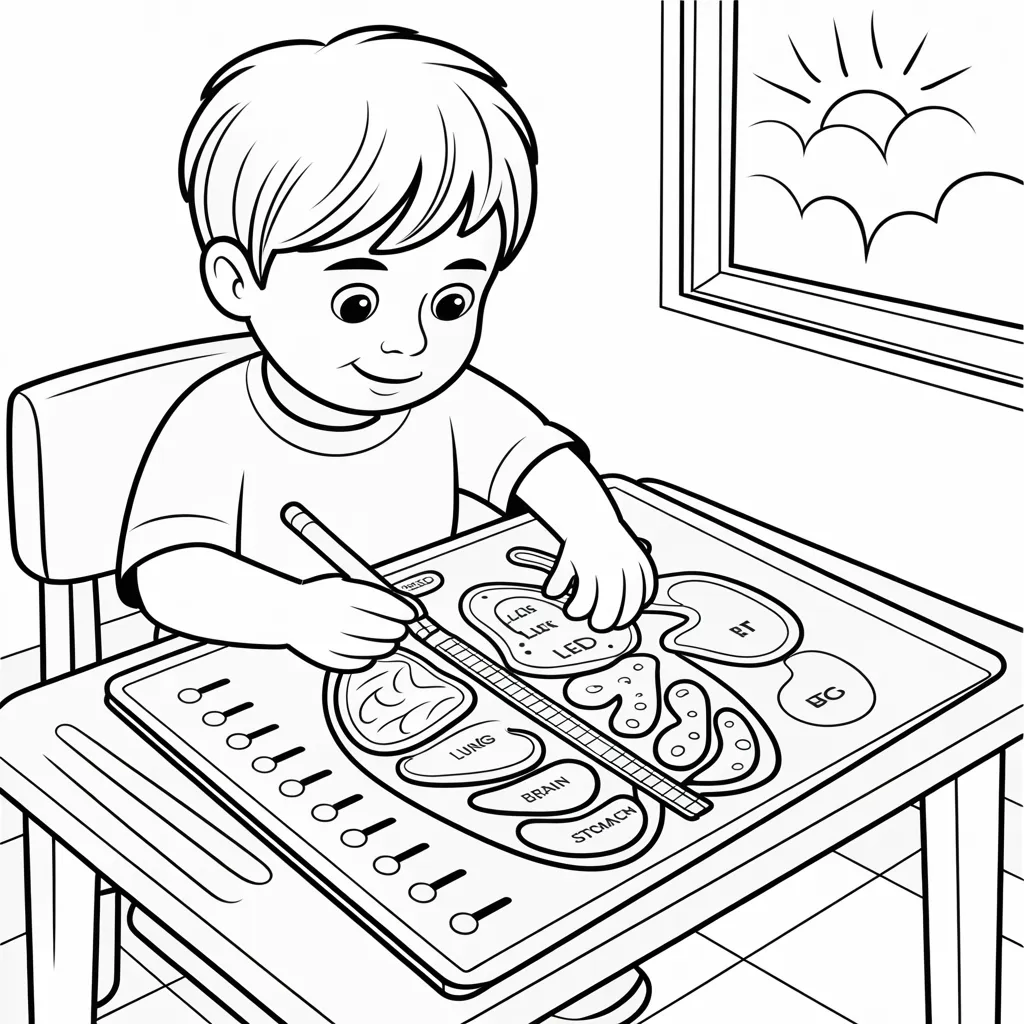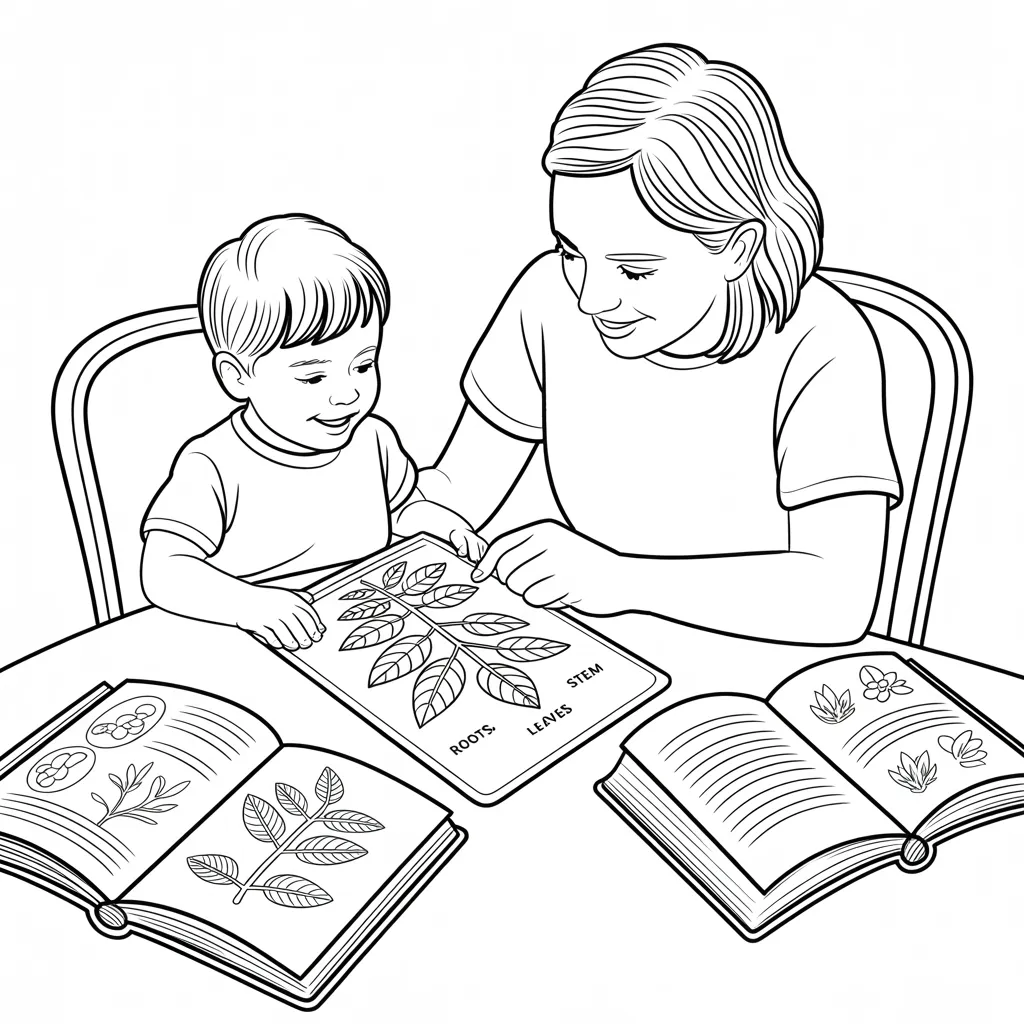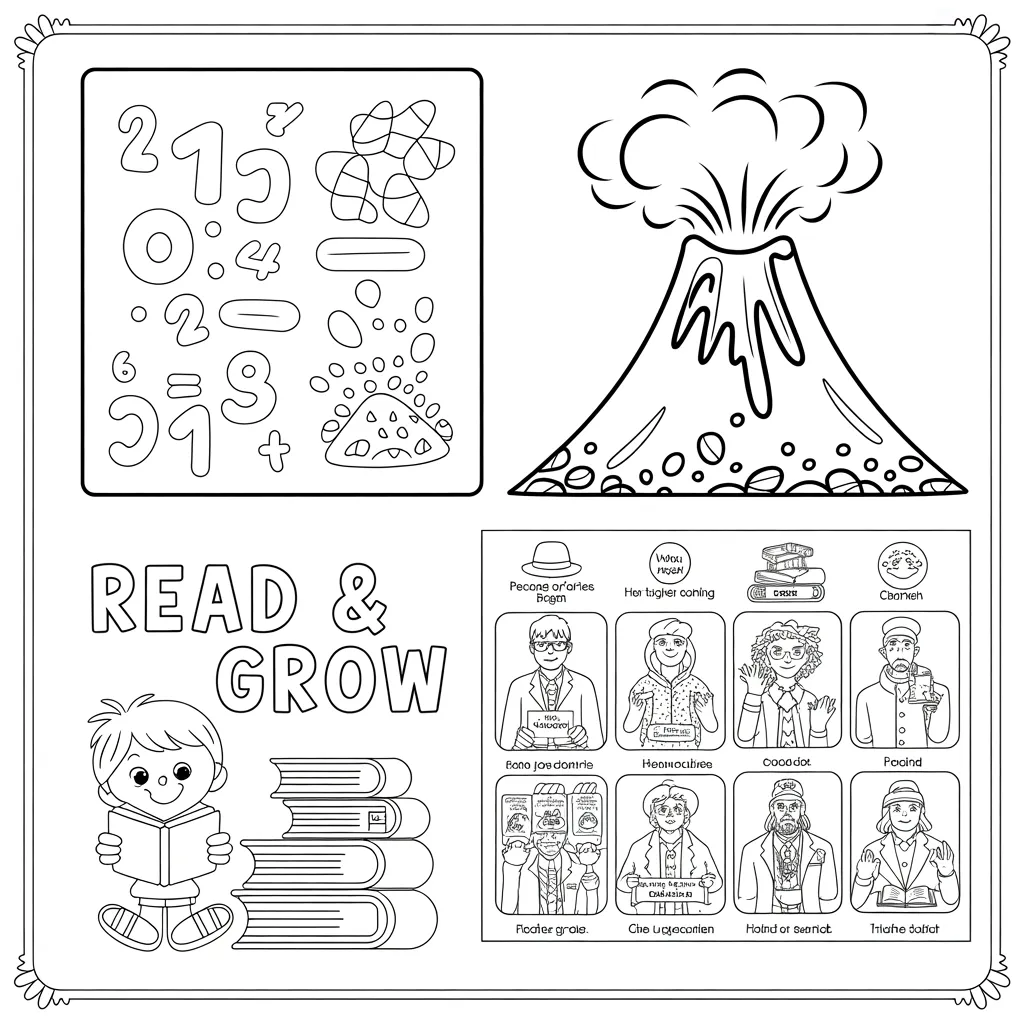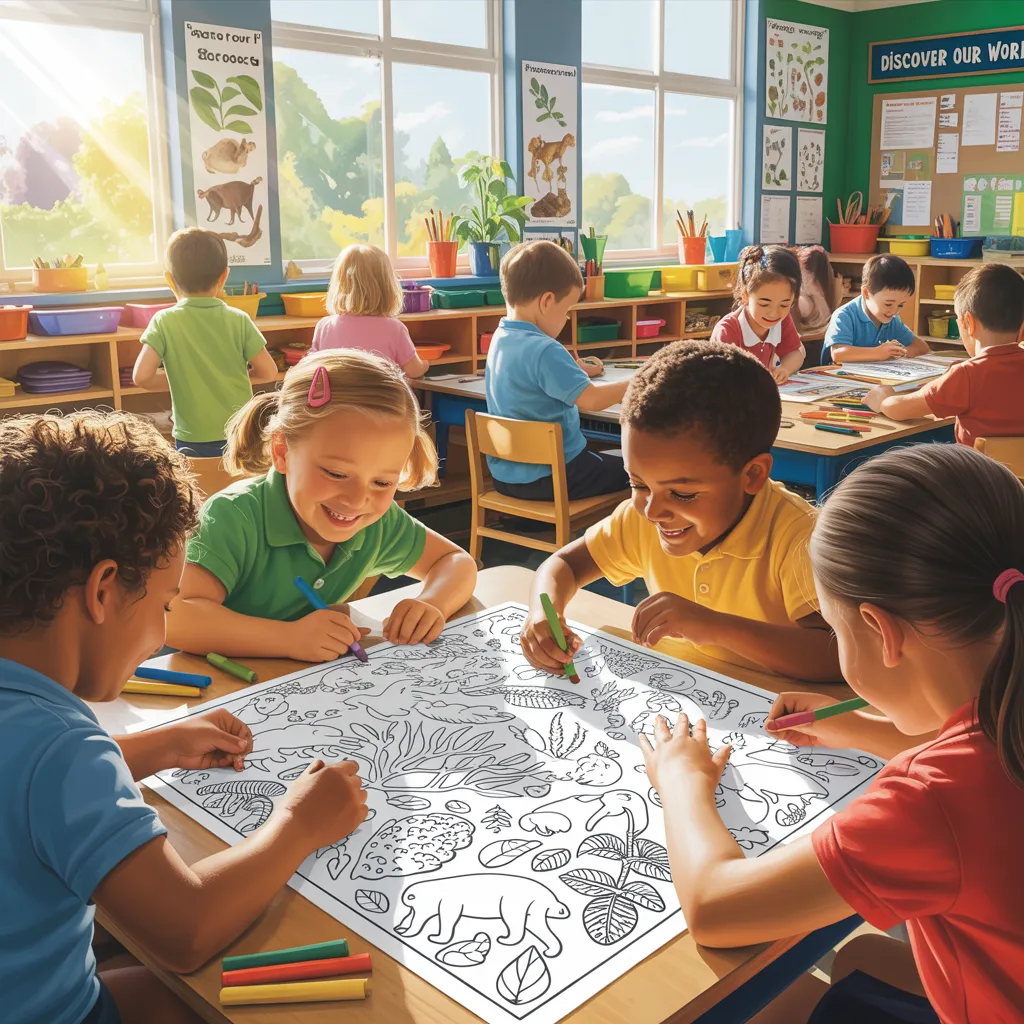In a world increasingly dominated by screens and digital entertainment, educational coloring sheets offer a refreshing, hands-on approach to learning that combines artistic expression with academic content. These versatile resources transform ordinary coloring activities into meaningful learning experiences, helping children absorb and retain information while enjoying the calming, focused activity of coloring. Far more than just busywork, well-designed educational coloring sheets strategically incorporate curriculum-aligned concepts into engaging visual formats that appeal to diverse learning styles. Whether used in classrooms, homeschool settings, or for enrichment during free time, these accessible tools support cognitive development, fine motor skills, and subject-specific knowledge across multiple age groups.

Click here to download your educational coloring PDF
Why Educational Coloring Sheets Are Essential Learning Tools
The pedagogical value of coloring extends far beyond simple entertainment, particularly when sheets are thoughtfully designed with educational objectives in mind. Research consistently demonstrates the cognitive benefits of combining visual learning with tactile engagement.
The Science-Backed Benefits of Educational Coloring Sheets
- Neural Connection Strengthening: The physical act of coloring activates multiple brain regions simultaneously, creating stronger neural pathways that enhance information retention.
- Stress Reduction and Focus: Coloring produces a meditative state that reduces anxiety and improves concentration, creating an optimal condition for learning new concepts.
- Fine Motor Development: Precise coloring within lines develops the same fine motor control needed for writing and other academic skills.
- Visual-Spatial Skills Enhancement: Working with educational coloring sheets improves children’s ability to understand relationships between objects and navigate two-dimensional space.
- Subject Matter Reinforcement: Content-specific coloring sheets allow children to engage with academic material through a different modality, reinforcing learning through visual representation.
Educational Coloring Sheets for Different Subject Areas
The versatility of educational coloring sheets makes them valuable across the curriculum, with specialized designs supporting specific learning objectives in every subject.
Math Concepts Through Educational Coloring Sheets
Number recognition, counting, shapes, patterns, and even more advanced concepts like fractions and geometry can be reinforced through carefully designed coloring activities. Color-by-number sheets that incorporate mathematical operations require students to solve problems before identifying the correct color, creating a self-checking learning activity that builds confidence alongside mathematical fluency.
Literacy Development Using Educational Coloring Sheets
Alphabet coloring sheets that pair letters with associated images strengthen phonemic awareness, while sight word coloring activities help emerging readers recognize high-frequency words. For more advanced students, educational coloring sheets featuring famous literary quotes or scenes from classic novels provide an artistic connection to literature while reinforcing comprehension.
Science Exploration via Educational Coloring Sheets
Anatomical diagrams, ecosystem illustrations, and life cycle sequences become more memorable when children interact with them through coloring. Educational coloring sheets featuring labeled parts of plants, animals, or human body systems allow children to learn scientific terminology while creating a colorful study guide they’ve connected with personally.
Social Studies and History Through Coloring
Historical figures, maps, cultural celebrations, and important monuments make excellent subjects for educational coloring sheets that build cultural literacy and historical knowledge. These visual representations help abstract historical concepts become more concrete and memorable for young learners.

Click here To download Your educational coloring PDF
Age-Appropriate Educational Coloring Sheets
The complexity and content of educational coloring sheets should align with developmental stages to maximize both engagement and learning potential.
Preschool Educational Coloring Sheets (Ages 2-4)
- Simple, Bold Outlines: Large shapes with thick boundaries accommodate developing fine motor skills
- Basic Concepts: Colors, shapes, numbers 1-10, and alphabet letters
- Familiar Subjects: Animals, family members, foods, and everyday objects
- Limited Details: Fewer elements per page prevent overwhelm and maintain focus
Elementary Educational Coloring Sheets (Ages 5-10)
- Increased Complexity: More detailed illustrations with smaller sections to color
- Curriculum Alignment: Content matching grade-level learning objectives
- Subject Integration: Sheets combining multiple disciplines (math problems within a science theme)
- Interactive Elements: Cut-out components, fold-lines for 3D projects, or accompanying puzzles
Middle School Educational Coloring Sheets (Ages 11-13)
- Sophisticated Designs: Intricate patterns and realistic illustrations
- Complex Concepts: Abstract ideas represented visually
- Cross-Curricular Applications: Historical events with mathematical elements
- Creative Extensions: Prompts for writing, research, or discussion alongside coloring

Click Here To download your educational coloring PDF
How to Create Custom Educational Coloring Sheets
Educators and parents can design personalized coloring sheets tailored to specific learning needs or interests.
Digital Tools for Creating Educational Coloring Sheets
Several accessible platforms empower even non-artists to create effective learning resources:
- Canva: Templates and simple drawing tools with educational elements
- Adobe Express: Conversion of photographs into coloring page formats
- Google Drawings: Basic creation tools with collaborative capabilities
- Specialized Educational Websites: Pre-made templates focusing on specific subjects and standards
Best Practices for Designing Effective Educational Coloring Sheets
- Clear Learning Objectives: Start by identifying exactly what you want children to learn
- Balanced Complexity: Create enough detail to engage without overwhelming
- Meaningful Labels: Include vocabulary words, definitions, or facts directly on the sheet
- Extension Prompts: Add questions or activities related to the coloring content
- Consistent Style: Maintain visual coherence across a series of related sheets
Integrating Educational Coloring Sheets into Learning Plans

Strategic implementation maximizes the educational impact of coloring activities.
Classroom Applications for Educational Coloring Sheets
- Station Activities: Include as one option during rotational learning
- Assessment Alternatives: Use as a creative assessment method for visual learners
- Early Finisher Work: Provide meaningful extension activities
- Lesson Introduction: Build background knowledge before formal instruction
- Collaborative Projects: Create classroom quilts or murals from individual sheets
Home Learning Enhancement with Educational Coloring Sheets
- Screen-Free Activities: Offer engaging alternatives to digital entertainment
- Travel Learning: Pack for educational engagement during trips
- Subject Reinforcement: Support school learning with complementary home activities
- Family Learning Moments: Create opportunities for educational conversations
- Seasonal Learning: Connect holiday themes with academic content
Conclusion
Educational coloring sheets represent a perfect marriage of artistic expression and academic content, offering an accessible, affordable, and effective learning tool for diverse educational settings. Their ability to engage multiple learning styles simultaneously while creating a focused, low-stress learning environment makes them invaluable resources for both educators and parents. By thoughtfully selecting or creating coloring sheets that align with specific learning objectives, adults can transform simple coloring activities into powerful educational experiences that children actively enjoy. Whether supplementing formal curriculum, providing enrichment, or simply making learning more engaging, educational coloring sheets deserve a place in every learning toolkit.
15 Transformative Alphabet Learning Chart Ideas to Supercharge Literacy Development
FAQs About Educational Coloring Sheets
Are educational coloring sheets effective for children who don’t enjoy art activities?
Yes, many children who don’t naturally gravitate toward traditional art projects still enjoy coloring, especially when the subject matter interests them. The structured nature of coloring within pre-drawn lines often appeals to children who might feel intimidated by more open-ended art activities, while the educational content engages those motivated by learning. Consider offering colored pencils rather than crayons for precise-minded children, and choose subject matter that aligns with their specific interests.
How can I prevent educational coloring sheets from becoming mere busywork?
Transform coloring sheets into active learning experiences by incorporating discussion questions, having children explain what they’ve learned while coloring, or adding writing prompts related to the content. Set clear learning intentions before beginning, and follow up with reflection afterward. Also, be selective about quantity—a few high-quality, content-rich sheets are more valuable than numerous simplistic ones.
At what age should children transition away from educational coloring sheets?
Rather than abandoning coloring sheets entirely, the format should evolve with age. Older students benefit from more sophisticated designs like intricate geometric patterns that teach mathematical concepts, detailed anatomical drawings, or primary source document illustrations that prompt historical analysis. Many adults continue to enjoy educational coloring for stress relief and learning, as evidenced by the popularity of adult coloring books featuring subjects like botany, architecture, and geography.
How can educational coloring sheets accommodate diverse learning needs?
Adapt sheets for different learners by providing varied complexity levels of the same content, adding texture elements for sensory learners, creating large-format versions for children with visual or motor challenges, or incorporating multilingual labels for language learners. Some children may benefit from partially colored examples, tracing options before coloring, or collaborative completion with peers or adults.
Where can I find high-quality educational coloring sheets without spending a lot of money?
Many reputable educational websites, museums, cultural institutions, and government agencies offer free, downloadable coloring sheets aligned with learning standards. University extension programs, professional teaching organizations, and public libraries also frequently provide complimentary resources. For subject-specific sheets, look to organizations specializing in that field—for example, NASA offers space-themed educational coloring pages, while national parks provide wildlife and habitat coloring activities.
